ADSactly Culture: Star-Crossed Lovers through History
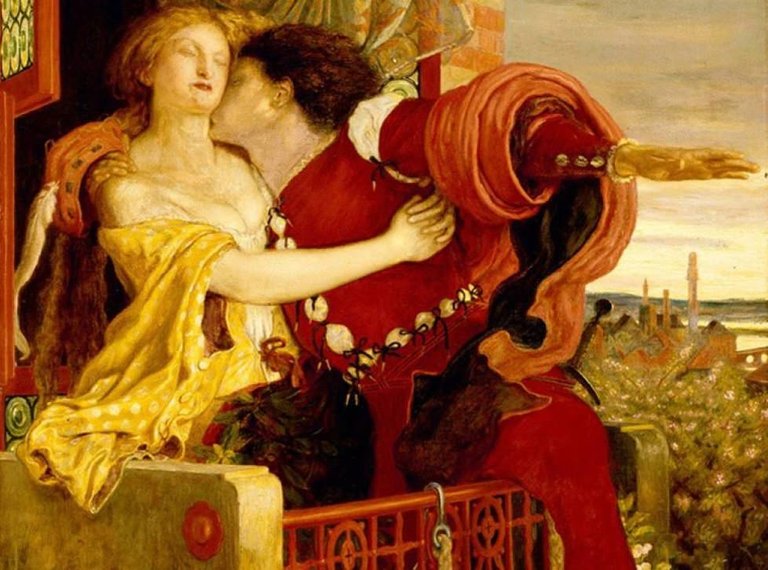
Romeo and Juliet - Ford Madox Brown
We all know the story of Romeo and Juliet. It is perhaps the most well-known play written by William Shakespeare and for many, it has been the love story for centuries. Women often say they're looking for a Romeo and while that might be a somewhat misguided remark (Rome is after all just a young impulsive boy), the imagery of Romeo&Juliet has fascinated both men and women for centuries. Dying for love, while not ideal, is certainly poetic.
But what about the time when Romeo and Juliet were not Romeo and Juliet?
Like with many of Shakespeare's plays, the concept behind R&J was not unique, nor did it actually belong to Shakespeare. He borrowed it, I believe, from popular tales that had been going on for centuries. So, I thought it interesting to have a look at the stories that went before Romeo and Juliet and that very probably served as inspiration to the Bard.
1. Hero & Leander
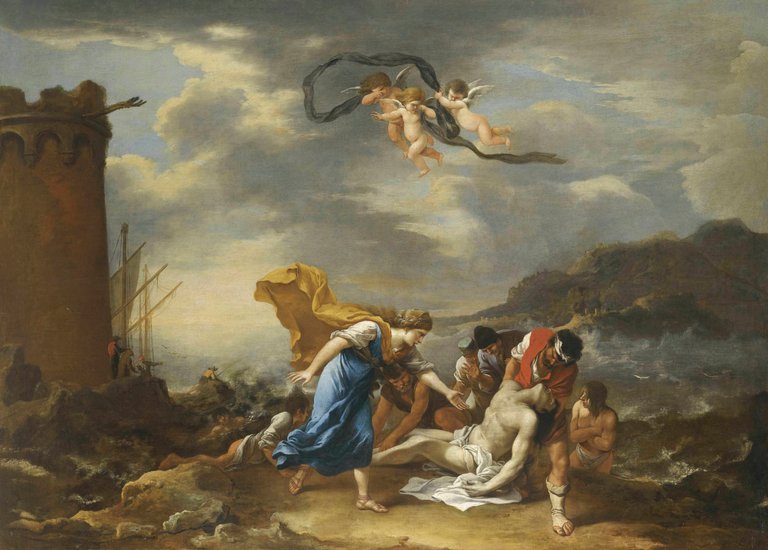
Hero bemoaning Leanded's death - Salvator Rossa
When we talk about Romeo and Juliet, it is impossible not to mention forbidden love. That is, after all, what makes the story so charming – the fact that Romeo and Juliet could not be together. But theirs was not the first tale of forbidden love.
Another famous story of star-crossed lovers is the myth of Hero and Leander, coming all the way from Ancient Greece.
Abydus and Sestus were two greek cities, facing each other from opposite sides of the Hellespont. Hero, a priestess of Aphrodite, lived alone in a tower in Sestus, cared for only by one servant woman. Leander, a young man from Abydus, saw Hero at a festival and immediately fell in love with her and she with him, but because of her being a priestess, she could never marry and had to remain a virgin, so their love was most unfortunate.
Not being able to resist, they decided that Leander would swim the Hellespont each night to be with his lady love, guided by a light in Hero's tower. But one stormy night, the wind blew her candle out and Leander lost his sense of orientation and tragically drowned.
The next day, his lifeless body washed up on the shores of Sestos. Upon hearing the terrible news of her lover's death, Hero was crushed and drowned herself, not wanting to live without Leander.
2. Pyramus and Thisbe

Thisbe by John William Waterhouse
You might be familiar with these two, as they make a quick appearance in another very famous Shakespearean play, A Midsummer Night's Dream. Theirs is the story that the actors are preparing in the forest when they meet the fairie folk.
Pyramus and Thisbe's sotry has been told many times throughout history, but it first appeared in Ovid's Metamorphoses. Pyramus and Thisbe are two lovers in old Babylon, who live in two connected houses. They are neighbors, but their families are rivals, and so, the young lovers can't ever be together.
But, as with most stories, love finds a way and the lovers discover a crack in the wall. They whisper their love for each other through the wall and arrange to meet under a mulberry tree one night.
Thisbe arrives first, but she is frightened by a lioness with blood on her mouth, so she flees, losing her veil in the process. Soon after that, Pyramus arrives and, upon seeing the bloody lioness and Thisbe's veil, he assumes that the beast has eaten his beloved. So, Pyramus stabs himself out of grief.
Thisbe soon returns at their rendez-vous spot and sees her lover dead. After a brief period of mourning, she stabs herself with the same sword, not wishing to live without Pyramus.
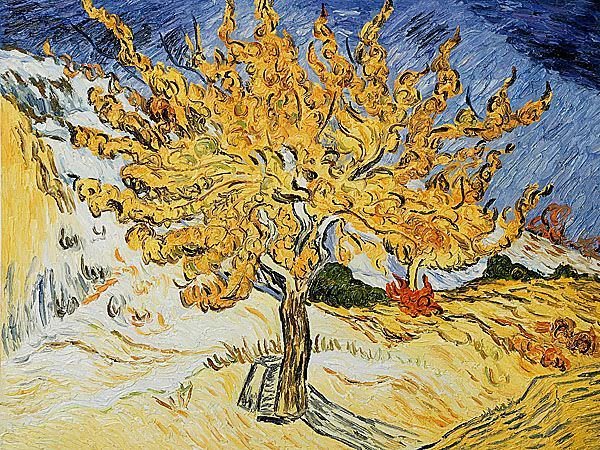
Mulberry Tree by Vincent Van Gogh
An interesting fact is that, according to the story, this is how mulberries got their color as we know it now. In the story, the fruits are white, but are splattered with Pyramus' blood when he kills himself. Touched by the young lovers' tale, the gods change the color of the fruit to the dark red we know now, to symbolize forbidden love.
3. Lovers of Teruel
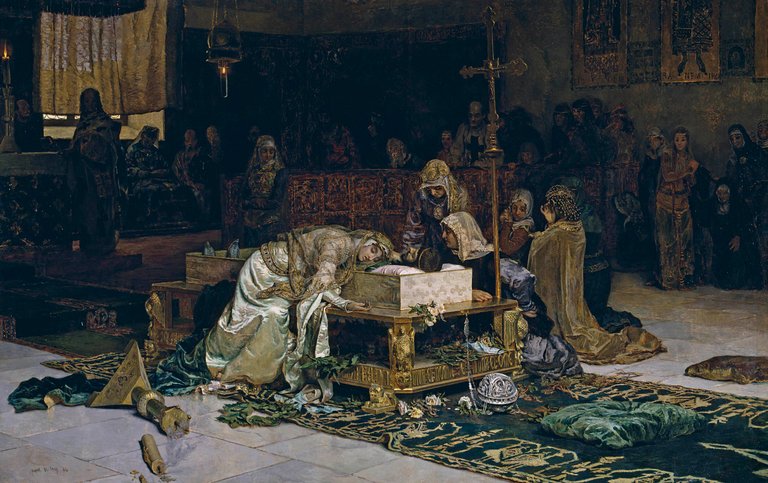
Los Amantes de Teruel - Antonio Muñoz Degrain
Another popular tale of forbidden and tragic love (and my personal favorite) is that of the lovers of Teruel. It is supposed to have taken place in the Spanish town of Teruel (Aragon), in 1217. Much like in Romeo and Juliet, in the town of Teruel, there were two wealthy and important families by the names of Marcilla and Segura and each of them had a young child. Diego was a Marcilla and Isabella a Segura and they were childhood playmates. It is said that they had always loved each other, but when they were old enough to wed, the Marcilla family fell on hard times. And so Isabel's father forbid the marriage, because he was the wealthiest man in town and he couldn't have his daughter marry someone below her.
Desperate not to lose his love, Diego made an agreement with Isabella's father – that he would leave Teruel for five years in order to build a fortune and then return, after precisely those five years, to marry Isabella.
The time passed and Isabella remained unmarried, waiting for her beloved Diego to return. But when the day came and five years had passed, there was no sign of him. So, Isabella's father wasted no time and married her off to another, wealthier man. And then, just as the wedding party was coming to an end, there was great commotion at one end of the town. Diego had returned, as promised, a wealthy man.
See, the trouble was the two men counted the time differently. Isabella's father included that day when Diego had come to ask for her hand in marriage, whereas Diego had not. The young man had been true to his promise, but it was now too late. Isabella was married to another.
Even when Diego snuck into her room at night while her husband was asleep and begged her to kiss him, she said 'no'.
Besame, que me muero.
Kiss me for I am dying.
She refused to kiss him, saying that God would punish her if she betrayed her husband and she urged him to find another. Again, he begged, but she refused. And so, hearing his love denied, Diego died.
The next day, a funeral was held in the local church. Isabella, deciding to grant Diego his final wish, walked down to the tomb, in her wedding dress and kissed her lover one last time. And then, she died as well.
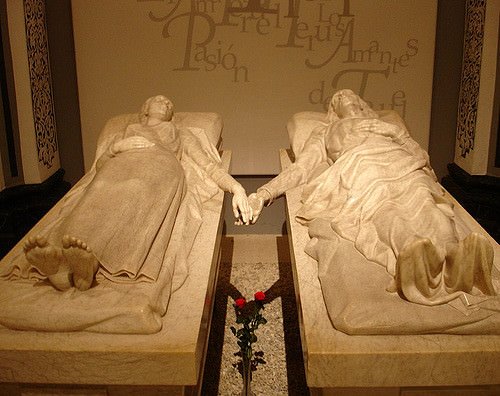
The Tombs of Diego and Isabella
Moved by the young lovers' suffering, the townspeople insisted that they be buried together – if they could not be together in life, they should at least be together in death.
And thus ended the tragic story of the ill-fated lovers of Teruel.
I'm sure there are many more such stories in history, these are just to name a few. I find it really interesting that before Romeo and Juliet was written, there was a quite popular Italian tale about two star-crossed lovers called Romeo Montague and Juliet Capulet, so it is quite popular the great Bard was merely transcribing an already existing folk tale (adding of course, his unique twists and phrases).
What seems even more fascinating isn't the origin of Romeo and Juliet itself, but that this sort of tragic story seems to have captivated people for thousands of years.
What do you think?
Authored by @honeydue
Click on the coin to join our Discord Chat

Witness proposal is here:
Go To Steem Witness Page
In the bottom of the page type: adsactly-witness and press vote.

Use small letters and no "@" sign. Or, click here to vote directly!
Thank you!
Many of these stories have appeared in literature but how many stories are left only in the cries of popular songs. How many stories are locked in the hearts of lovers?
I think that in @adsactly someone is in love. I have read several stories this week, all related to love. And thinking about it, how beautiful it is to be in love !! even if it is an impossible love. Thank you @honeydue for this historical tour dedicated to love. Loves that ended in tragedy, in the death of lovers who could never fulfill their aspirations. Good publication Thanks @honeydue not only for your comments but for the paintings and photographs. @adsactly Thanks for inviting us to read about love in the history of the humanity.
I love love stories! I'm a fan of them. I think love is one of the forces that moves the world. In particular, impossible loves leave me wanting to know more, they leave me with questions. If we realize it, Romeo and Juliet are a kind of symbol of those literary and youthful loves, but there are the impossible non-literary loves, those that existed in real life, as is the case of Frida and Diego, Cleopatra and Marco Antonio, Rodolfo de Habsburgo and María Vetsera, or the cinematographic ones. They are super interesting and worth knowing stories. Thank you very much for this beautiful post, @honeydue and @adsactly for sharing.
Palimpsestos. Myth, legend and folktale are permanent sources of them. As with love, it also happens with betrayal, power, death, to name a few of the most recurrent. I think, for example, of the versions prior to Don Juan by Zorrilla or FaustoIndeed, impossible or truncated love is one of the motives or topics of universal literature, and it cannot be otherwise because it is one of the forces that move life. You come back with very good information, @honeydue, about these stories so striking (@nancybriti has given us some very interesting too). Literature, being an uninterrupted legacy, establishes relations with each other (what the theory has called "intertextuality"); thus, there are literary works that rewrite previous histories, through imitation and transformation, as Gérard Genette studied in by Goethe. Thanks for such an attractive post, @honeydue, as well as @adsactly for publishing it. Greetings.
Hi, @adsactly!
You just got a 0.8% upvote from SteemPlus!
To get higher upvotes, earn more SteemPlus Points (SPP). On your Steemit wallet, check your SPP balance and click on "How to earn SPP?" to find out all the ways to earn.
If you're not using SteemPlus yet, please check our last posts in here to see the many ways in which SteemPlus can improve your Steem experience on Steemit and Busy.
every photo carry on many of meaning...!!
I think we over-romanticise love, but we cannot help it. What all the stories told us about love is that we should only find it in disappear, in the death and is not available for the common people. Well is just infatuation in a way, we kind of believe we are much better if we have better ideals about love. My favourite song and view about love is Pulp - Common People :)
Posted using Partiko Android
Congratulations @adsactly! You have completed the following achievement on the Steem blockchain and have been rewarded with new badge(s) :
Click here to view your Board of Honor
If you no longer want to receive notifications, reply to this comment with the word
STOPTo support your work, I also upvoted your post!
Interesting @adsactly. let's enliven the comment column so that the writing also adds enthusiasm for writing and the one who comments if fortune can be paid. Sometimes I want to be confused about what to say ... especially like the abunagaya story above the comments for up to two paragraphs ... yeah, at least let's comment on interesting writings and we understand not to be read by others instead, just as long as the comments are heheeee ...
Interesting @adsactly. let's enliven the comment column so that the writing also adds enthusiasm for writing and the one who comments if fortune can be paid. Sometimes I want to be confused about what to say ... especially like the abunagaya story above the comments for up to two paragraphs ... yeah, at least let's comment on interesting writings and we understand not to be read by others instead, just as long as the comments are heheeee ...